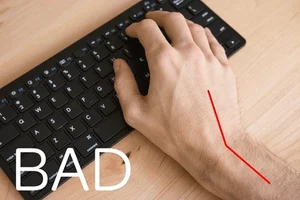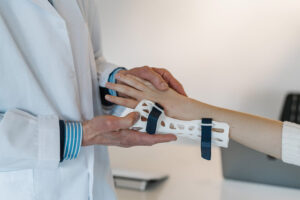Keyboard Height
Sit with your shoulders relaxed and good upright posture. Place your hands on the keyboard at the typing position. Adjust your seat until your elbows are at a 90-degree angle.
Keyboard Rests
Chronic pressure to the underside of the wrist is commonly associated with carpal tunnel syndrome, a wrist support is recommended for your keyboard. Depending on the size of your hand, you may want to raise the rear of the keyboard (smaller hands) or the font of the keyboard (Larger hands).

Footrest
Make a note of the position of your knees and feet. Ideally with your feet flat on the floor you will have a 90-degree angle at your knees. If your knees are higher than your hips you need a taller desk. If they you cannot place your feet flat on the floor you need a footrest. Adjustable footrests are ideal.
Monitor Height
Sit at your desk and look straight ahead. The top of the monitor should be a eye level. The distance should be no less than 14’’ and no more than 30’’.
Tilting Seat
If your chair has a tilting seat you may want to adjust it throughout the day depending on the task you are completing. Moving your pelvis around help hydrate your spinal discs through the day for a healthy spine.
Phone Head Set
If you talk on the phone for long periods of time is it probably a good idea to get a headset. Eliminating the neck and shoulder pain of holding a phone with your shoulder and promoting good posture.







